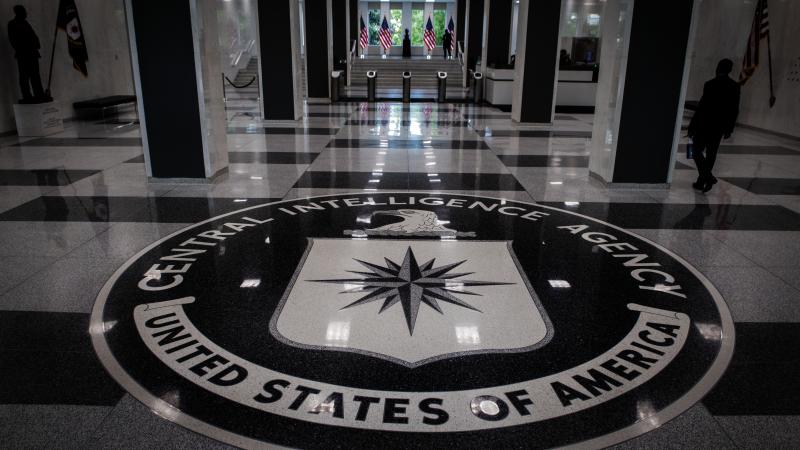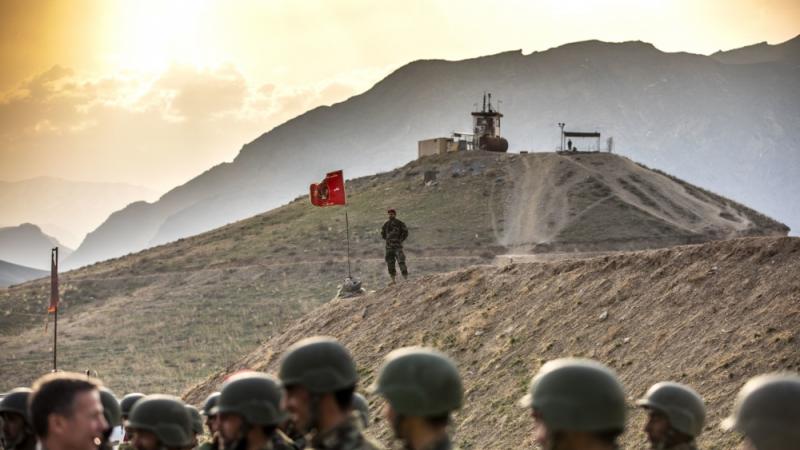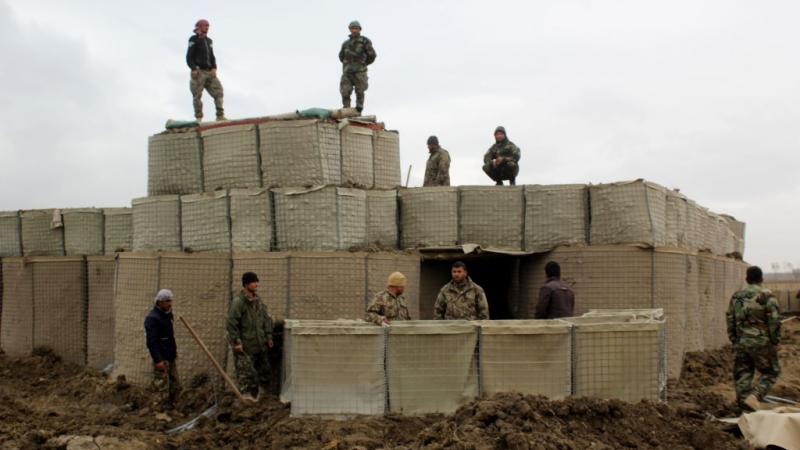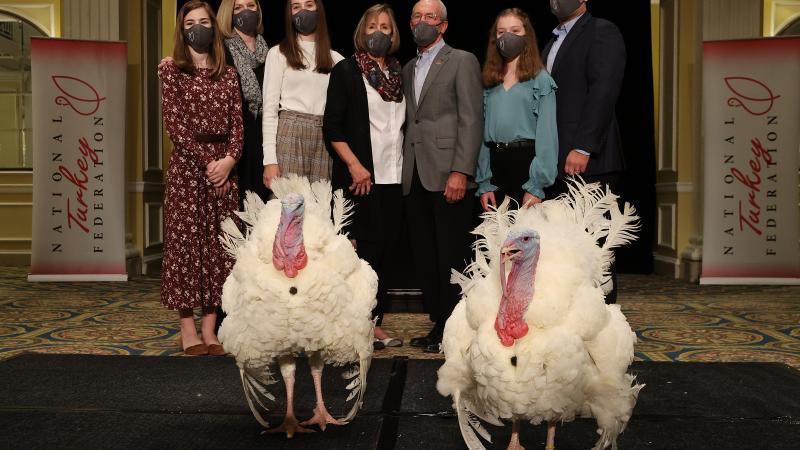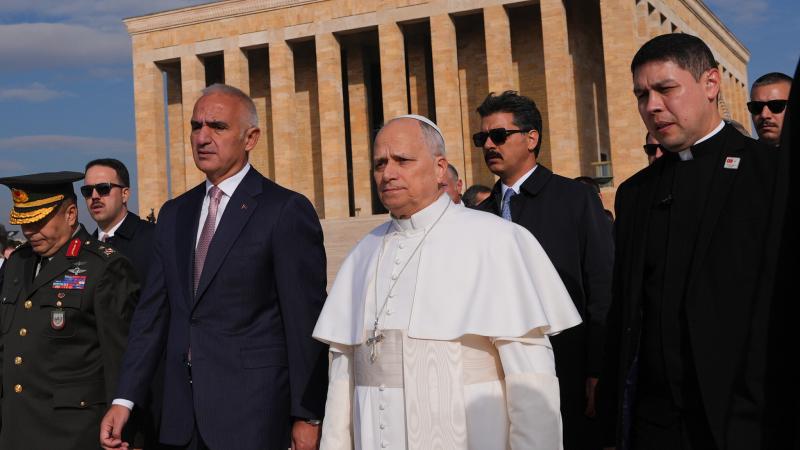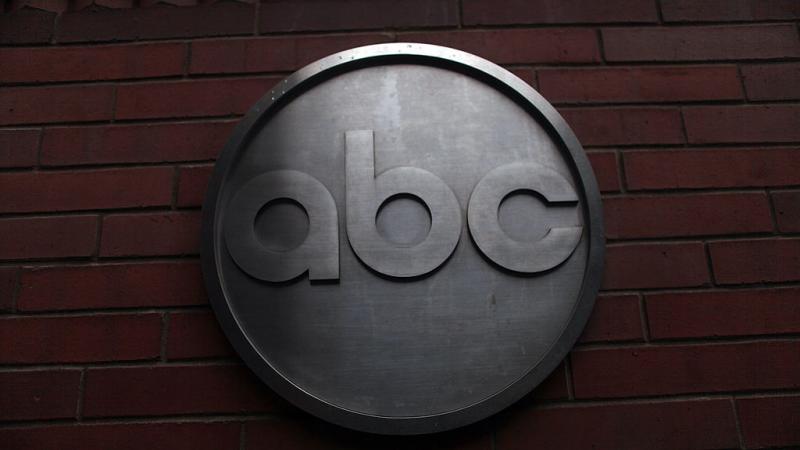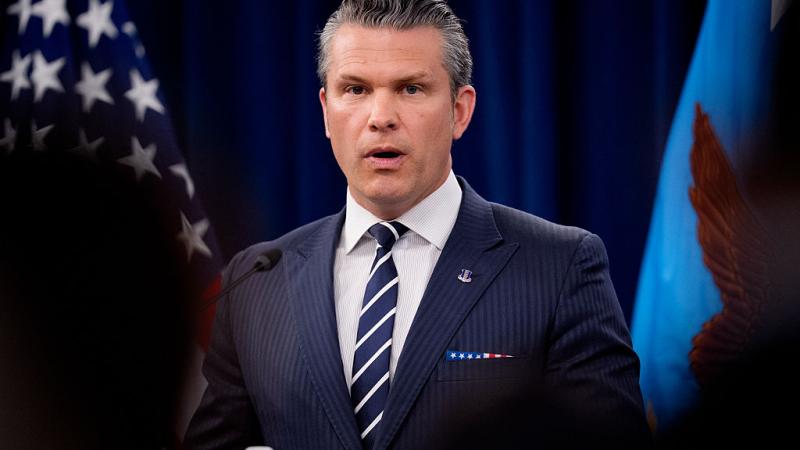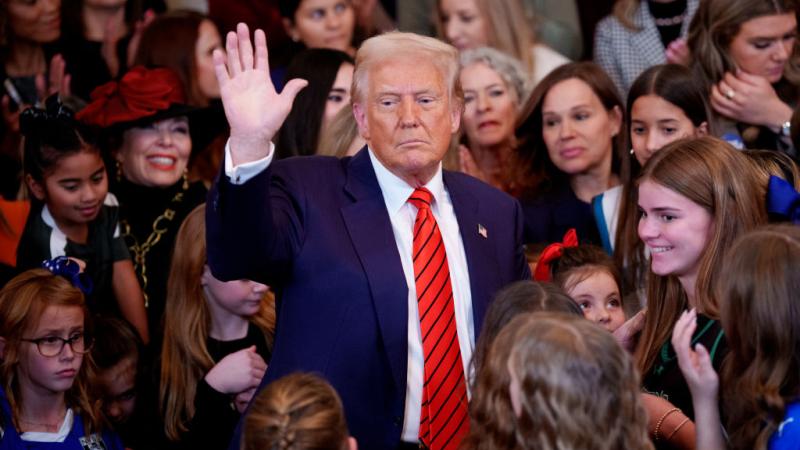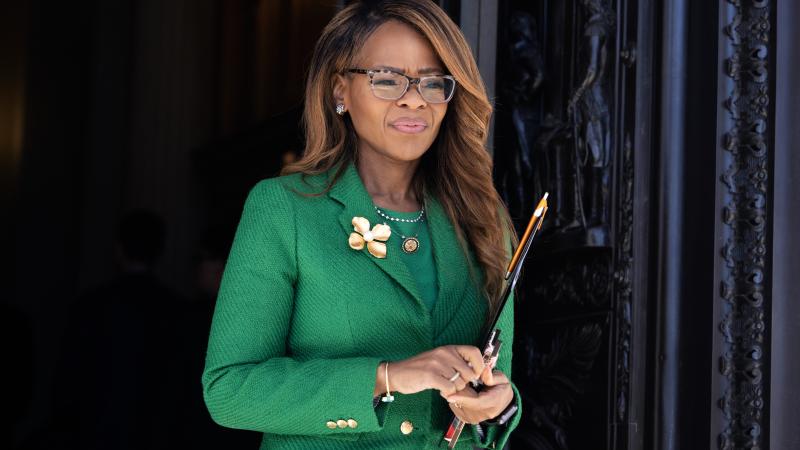Once-secret report confirms U.S. intel used Steele Dossier to push narrative Putin helped Trump
Declassified House Intel Committee analysis blasts tradecraft of Obama-era Russia collusion intelligence assessment, conflicts with Brennan's congressional testimony.
A newly-declassified House Intelligence Committee report alleges that the Obama-era intelligence assessment on Russian election meddling used the discredited Steele Dossier to underpin its conclusion that Vladimir Putin aspired to help Donald Trump win the 2016 election, directly challenging the testimony of officials like CIA Director John Brennan, who denied that had happened.
The report, released Thursday by Director of National Intelligence Tulsi Gabbard after years of being locked away at the CIA, also alleges the December 2016 Intelligence Community Assessment "glossed over" evidence that Putin may have instead favored (or at least fully expected) a Hillary Clinton victory nine years ago.
"The judgment that Putin developed a 'clear preference' for candidate Trump and 'aspired to help his chances of victory' did not adhere to the tenets of the ICD (Intelligence Community Directive) analytical standards," the report found.
"The ICA ignored and selectively quoted reliable intelligence reports that challenged and in some cases undermined judgments that Putin sought to elect Trump," the report added. "The ICA failed to consider plausible alternative explanations of Putin's intentions indicated by reliable intelligence and observed Russian actions."
You can read the full report here.
Criminal conspiracy investigation
The report's release comes as FBI Director Kash Patel has opened a criminal conspiracy case alleging the weaponization of intelligence and federal law enforcement between 2016 and 2024 violated federal law and multiple criminal referrals have been sent to the Pam Bondi-led Justice Department.
Brennan and other collaborators on the ICA have steadfastly denied wrongdoing and suggested any criminal probe now would be politically motivated.
The “Oversight Investigation & Referral” coversheet for the 44-page report is dated September 2020, and transmitted to the CIA with a report written years ago by the GOP-led committee chaired at the time by then-Rep. Devin Nunes, R-Calif.
The report’s classified findings on the 2016 ICA had been closely held by the CIA for many years, with CIA Director John Ratcliffe handing the report back over to the committee earlier this month.
Rep. Rick Crawford, R-Ark., the current chairman of the House Intelligence Committee, sent Trump a letter earlier this month telling him that the report by the committee “exposes the truth about the politically driven Obama-era assessment.”
Crawford urged Trump to read the classified report and argued in his letter that “public interest declassification is merited.”
The declassified House report affirmed many of the conclusions of the ICA but strongly faulted the “high confidence” assessment given by the FBI and the CIA that Putin was trying to help Trump win, calling it a deviation of spy tradecraft.
“Today, @DNIGabbard declassified the 2017 HPSCI Majority staff report, which is the FINAL nail in the coffin of the Russia hoax, which has perpetrated the greatest political fraud on the American people for over 8 years and undermined President Trump’s first term in office, Crawford said in an X post on Wednesday. “This report, for the first time, exposes in-depth details on how the Intelligence Community manufactured the Russia collusion hoax.”
Putin's goal was chaos, not helping Trump
Most other intelligence agencies in the U.S. government were excluded from the December 2016 ICA after just a few months earlier coming to a different conclusion that Putin was simply trying to sow chaos in the 2016 election.
The House report offered strong evidence that the ICA directly cited the Steele Dossier when it argued that Putin had aspired to help Trump win.
The GOP House report also found indications that the drafters of the ICA had willingly avoided looking at evidence suggesting Putin was indifferent to the results of the 2016 election, had resigned himself to Clinton winning, may have even preferred a Clinton victory, and held back damaging information on Clinton under the expectation that it would be used to undermine her assured presidency.
The 2016 ICA was written at the direction of President Barack Obama and largely overseen by then-Director of National Intelligence James Clapper, then-CIA Director John Brennan, and the since-fired FBI Director James Comey. It was finished in December 2016, with a publicly declassified version released in early January 2017 and a more extensive classified version declassified and released last week.
Comey and McCabe pushed for Steele Dossier's inclusion
Comey and former FBI Deputy Director Andrew McCabe had pushed in December 2016 to include British ex-spy Christopher Steele's debunked dossier in the 2016 ICA on alleged Russian meddling.
The dossier was included in an annex to the assessment. The newly-declassified House report sharply criticized Brennan for allegedly joining with anti-Trump forces in the FBI in pushing to include Steele’s baseless anti-Trump dossier in the ICA.
Steele, a former MI6 agent, was hired in 2016 by the opposition research firm Fusion GPS, which was being paid by Clinton campaign lawyer Marc Elias. Federal election regulators later fined Hillary Clinton’s 2016 presidential campaign and the Democratic National Committee earlier this month for not properly disclosing the money they spent on the debunked opposition research.The dossier was used by the FBI to obtain FISA warrants against a Trump campaign official, and evidence continues to emerge about how it was included in the ICA on Russia and the 2016 election.
The December 2016 assessment from the CIA, the FBI, and the NSA concluded with “high confidence” that Putin “ordered an influence campaign in 2016” and that Russia worked to “undermine public faith in the U.S. democratic process, denigrate former Secretary of State [Hillary] Clinton, and harm her electability and potential presidency” and “developed a clear preference for President-elect Trump.”
Admiral Mike Rogers, then the leader of the NSA, diverged from Brennan and Comey on one key aspect, expressing only “moderate confidence” rather than “high confidence” that Putin had “aspired to help” Trump’s election chances in 2016 by “discrediting” Clinton" and publicly contrasting her unfavorably to him.
The Ratcliffe report
These declassifications by Gabbard come on the heels of the CIA’s recent “lessons learned” review — released earlier in July by Deputy Director of CIA for Analysis John Ratcliffe — which concluded that “the decision by agency heads to include the Steele Dossier in the ICA ran counter to fundamental tradecraft principles and ultimately undermined the credibility of a key judgment.”
That review also critiqued the “high confidence” assessment by the FBI and the CIA that Putin had “aspired” to help Trump win, and Ratcliffe also sent a criminal referral on Brennan to the FBI following the CIA lessons-learned review earlier in July.
Last week, Gabbard sent declassified evidence to the Justice Department on what she dubbed a “treasonous conspiracy” related to top U.S. intelligence officials allegedly politicizing intelligence related to Russia and the 2016 election.
Gabbard's office on Friday issued a press release stating that Gabbard had “revealed overwhelming evidence that demonstrates how, after President Trump won the 2016 election against Hillary Clinton, President Obama and his national security cabinet members manufactured and politicized intelligence to lay the groundwork for what was essentially a years-long coup against President Trump.”
A spokesperson for Obama released a statement on Tuesday in response to Gabbard’s report from last week.
“Out of respect for the office of the presidency, our office does not normally dignify the constant nonsense and misinformation flowing out of this White House with a response. But these claims are outrageous enough to merit one,” the Obama statement read.
“These bizarre allegations are ridiculous and a weak attempt at distraction. Nothing in the document issued last week undercuts the widely accepted conclusion that Russia worked to influence the 2016 presidential election but did not successfully manipulate any votes. These findings were affirmed in a 2020 report by the bipartisan Senate Intelligence Committee, led by then-Chairman Marco Rubio," Obama's response added.
Despite Brennan's denials, Steele Dossier was incorporated into ICA
The newly-declassified analysis states that “contradicting public claims by the DCIA that the dossier ‘was not in any way’ incorporated into the ICA, the dossier was referenced in the ICA main body text, and further detailed in a two-page CIA annex.”
The ICA stated that “we assess the [Russian] influence campaign aspired to help Trump's chances of victory” in the 2016 election, and the most highly-classified version of the ICA “was followed by four bullet [points] of supporting evidence,” the House report found.
"The fourth bullet [point] referred the reader to a detailed summary and analysis of the dossier," the report concluded in a bombshell revelation.
The highly-classified version of the ICA stated: “For additional reporting on Russian plans and intentions, please see Annex A: Additional Reporting from an FBI Source on Russian Influence Efforts.”
“Ultimately, the decision of how to handle the dossier was jointly made by the Directors of CIA and FBI, who overruled the objections from CIA officers, and agreed to reference it with other ICA text bullets describing Putin's intentions, while placing the details of the dossier in the ICA Appendix A, according to senior CIA officials,” the newly-declassified House report said.
The House report stated that “by devoting nearly two pages of ICA text to summarizing the dossier in a high-profile assessment intended for the President and President-elect, the ICA misrepresented both the significance and credibility of the dossier reports.”
The newly-declassified House analysis suggested that including the dossier in the most highly-classified version of the ICA may have been an attempt to use the dossier’s baseless allegations to reach conclusions within the assessment while hiding the ball from those who could not gain full access to the ICA.
“Even though the dossier information was unclassified, the dossier summary was only included in the highest classified version of the ICA that was briefed to President Obama and President-elect Trump, and was seen by various national security officials and senior political appointees. It was omitted from both the Top Secret version of the ICA released for Congress, and the unclassified, public-release version,” the House report said. “By relegating the dossier text to only the highest classified version of the ICA, the authors were better able to shield the assessment from scrutiny, since access to that ICA version was so limited.”
Brennan, Comey, Rogers, and Clapper briefed President-elect Trump about their election meddling findings at Trump Tower in January 2017. Comey stayed behind to tell Trump about some of the dossier’s more salacious allegations.
The Steele Dossier annexed to the ICA was largely declassified in 2020, and it relayed some of Steele’s baseless collusion claims which became the Clinton campaign's main narrative, largely adopted by legacy media: “The most politically-sensitive claims by the FBI source [Steele] alleged a close relationship between the President-elect and the Kremlin. The source also claimed that the president-elect and his top campaign advisers knowingly worked with Russian officials to bolster his chances of beating Clinton; were fully knowledgeable of Russia’s direction of leaked Democratic emails; and were offered financial compensation from Moscow.”
Brennan inconsistent on dossier's inclusion
Brennan testified in May 2023 before the House Judiciary Committee, where he was forced to talk about the ICA and the dossier. He said the CIA had opposed including the dossier in the ICA.
Clapper also testified the same month before the same committee, telling members the dossier was not used in the ICA and that the ICA did not include any reference to the dossier and did not draw upon the anti-Trump document to reach any conclusions. He also said it was possible the dossier contained Russian disinformation.
The House Intelligence Committee’s public 2018 report noted, however, that Rogers “clarified” to the committee that, in late December 2016, a two-page summary of the Steele dossier was "added" as an "Appendix to the ICA draft," and that his consideration of the classified appendix was "part of the overall ICA review/approval process."
Dossier misrepresented in ICA
The declassified House report also said that the ICA “misrepresented the unsourced Steele Dossier” as having been reliable intelligence reporting on “Russian Plans and Intentions.”
The House report said that “the dossier's most significant claims — that Russia launched cyber activities to leak political emails — were little more than a regurgitation of stories previously published by multiple media outlets prior to the creation of the dossier” and that “other dossier reports were either proven false or were unsubstantiated, and these largely disparaged candidate Trump's character and alleged collusion between him or his campaign and Russian intelligence in a criminal conspiracy to influence the U.S. 2016 election.”
“The ICA ‘Annex A’ summarized the dossier's anti-Trump allegations, and included some analysis that struggled to imply that some dossier findings might have been corroborated by intelligence,” the newly-declassified House report said. “The lead author of ICA, a CIA officer, said that he drafted the Annex A in coordination with FBI.”
The House report said that “the ICA referred to the dossier as ‘Russian plans and intentions,’ falsely implying to high-level U.S. policymakers that the dossier had intelligence value for understanding Moscow's influence operations.”
The declassified report added that the “ICA misleadingly described the dossier as coming from ‘an FBI source.’ But Mr. Steele was not an FBI source as he had already been fired two months before the ICA was published for lying to the Bureau, critical information that should have been clarified.”
“The ICA also describes dossier information as collected from ‘a layered network of identified and unidentified subsources’ although the CIA did not clarify that FBI and CIA had so few details on the alleged network, that they didn't know if this material was all or in part fabricated by Mr. Steele, his subsources, or if it was Russian disinformation fed to the subsources,” the House report said.
CIA failed to check reliability of sources
The new House report said that “CIA analysts and operations officers struggled to explain how the ICA — written for two Presidents and other high-level officials — could have included dossier information without identifying and vetting primary sources and without explaining the political circumstances surrounding why the report was produced and funded.”
The FBI offered Steele an “incentive” in October 2016 of up to $1 million if Steele could prove the allegations in his discredited anti-Trump dossier, but the former MI6 agent was unable to back up his claims.
The Crossfire Hurricane team also put together a lengthy spreadsheet in late 2016 laying out the wildly unsuccessful efforts taken by the FBI to attempt to verify the claims in Steele’s discredited dossier.
DOJ Inspector General Michael Horowitz found huge flaws with the FBI’s investigation, including criticizing the “central and essential” role of the dossier in the FBI’s politicized surveillance of former Trump campaign associate Carter Page. Horowitz found at least 17 “significant errors and omissions” related to the FISA warrants targeting Page.
The DOJ watchdog said the Steele Dossier’s alleged main source – Igor Danchenko – “contradicted the allegations of a ‘well-developed conspiracy’ in” the Steele Dossier.
Declassified footnotes from Horowitz’s report provide multiple concerns that the dossier may have been infected by “Russian disinformation.” Declassified documents also show the FBI previously investigated Danchenko as a possible “threat to national security” in part due to his alleged contacts with “suspected Russian intelligence officers.”
A two-year investigation by Justice Department special counsel Robert Mueller “did not establish” any criminal Trump-Russia collusion. A report by Special Counsel John Durham concluded in 2023 that the "FBI ignored the fact that at no time before, during, or after Crossfire Hurricane were investigators able to corroborate a single substantive allegation in the Steele dossier reporting.”
Dossier added by Brennan over objections of CIA professionals
The newly-declassified House analysis provided further detail on how Brennan ensured the dossier would be included in the ICA, despite pushback from others at the CIA. The report stated that “the DCIA rejected requests from CIA professionals that the dossier be kept out of the ICA.”
The report cited a senior intelligence officer present at a meeting with Brennan where “two senior CIA officers — one from Russia operations and the other from Russia analysis — argued with DCIA that the dossier should not be included at all in the ICA, because it failed to meet basic tradecraft standards.”
The same officer said that Brennan refused to remove the reference to the dossier and, when Brennan was confronted with the dossier's significant problems, said that Brennan reportedly replied, "Yes, but doesn't it ring true?"
The declassified House report said that “CIA veterans noted that they could not imagine any previous director allowing such information in a formal ICA product, much less one intended for two Presidents, and then overriding the objections of experienced senior officers to do so.”
In what may be in preparation for a possible criminal defense, Brennan's insistence that he did not include the report may turn on the semantic argument between "annexing" the Steele Dossier and "including" it. In either event, the bogus report was widely circulated and adopted by Clinton and other anti-Trump entities.
The report revealed that “every CIA analyst and operations officer who was asked about the ‘dossier’ took pains to emphasize that they had nothing to do with the decision to include Annex A, could not vouch for it, did not believe it should have been included, and some CIA officers blamed FBI officials for adding it to the ICA.”
Report: Brennan preferred pushing anti-Trump narrative over soundness of work
The CIA’s then-deputy director for analysis warned in a late December 2020 email to Brennan that including the dossier in any form risked “the credibility of the entire paper," Ratcliffe's review found.
“Despite these objections, Brennan showed a preference for narrative consistency over analytical soundness. When confronted with specific flaws in the Dossier by the two mission center leaders — one with extensive operational experience and the other with a strong analytic background — he appeared more swayed by the Dossier's general conformity with existing theories than by legitimate tradecraft concerns,” the CIA said in the Ratcliffe review, stating that Brennan had written that “my bottomline is that I believe that the information warrants inclusion in the report.”
The declassified House Intelligence report said the ICA’s admission that Putin held off on deploying much of the damaging information he had on Clinton should’ve made the ICA authors strongly consider the possibility that Putin was looking to harm Clinton’s expected presidency rather than get Trump into the White House.
The report contended that “Russian strategic plans appeared to prioritize post-election influence operations, rather than aspiring to help Trump win the election” in 2016.
“By keeping the most damaging material on Clinton in reserve, Putin was not only demonstrating a clear lack of concern for Trump's election fate, but conversely, his actions could also indicate that he preferred to see Secretary Clinton elected, knowing she would be a more vulnerable President than candidate Trump,” the newly-released House intelligence report said. “Moscow's reserve of compromising materials would have given Putin leverage over a Clinton Administration, but not a Trump one.”
“The ICA glossed over the significance that ‘Moscow held back some pre-election influence efforts for potential later use’ without explaining how much more damaging these were than the relatively benign materials leaked during the election, and the implications that Putin preferred Clinton to win or at least didn't care,” the declassified report said.
“The ICA also did not address the possibility that, even setting aside the compromising materials Moscow had on Secretary Clinton, Putin might have considered her the weaker prospect for President, given the Russian Foreign Intelligence Service (SVR) reporting on her psychological health.”
The House report cited some partially-redacted evidence to bolster the committee’s contentions.
“[REDACTED] omitted from the ICA provides more evidence that President Putin's priorities were not focused on election operations designed to help candidate Trump to win,” the report said of one set of intelligence. “Rather, his priorities appeared focused on post-election operations to undermine the credibility of the expected, and possibly preferred, Clinton Administration, and on calling into question the fairness and effectiveness of the American democratic process.”
The report cited further intelligence, writing that “the timing and context of these discussions — addressing possession and leaking of emails damaging to candidate Clinton — suggests [REDACTED] was deliberately ‘laying low’ with unspecified material and planning ‘to shoot’ after the election when the new Administration was setting up.”
“[REDACTED] does not specify which candidate they expected to attack or the details of what [REDACTED] means, but the context suggest it was leaking the particularly damaging emails on Secretary Clinton, that were held back prior to the election,” the report also said. “It is clear, however, that the goals discussed did not involve helping one candidate or the other to win the election, but rather, ‘getting ready’ for the big attack after the election when the new Administration was setting up.”
The House report said that “the strategic plan” apparently being considered by the Russians “would only work if Secretary Clinton won the election, and the reserve materials Moscow held on her would be leaked — a plausible explanation for ‘to shoot’ in this context — in conjunction with the media campaign Russian intelligence was preparing.”
The House report pointed to the ICA’s finding that Putin held back on releasing a significant amount of damaging information on Clinton. “That Putin had reasons to want Clinton elected is supported not only by Putin's actual behavior, but also by the timing and content of Russian operational orders that indicated that Moscow assumed they had unique leverage over Secretary Clinton that would be more useful if she won the election,” the report said.
Putin "supporting" Trump makes no sense, experts say
“The timing and targets of FSB and SVR” — Russian intelligence agencies — “covert media orders did not make sense if President Putin's intent was to ensure the election of candidate Trump,” the declassified report argued. “Operations timed to launch after the election or that targeted European leaders would not be expected to influence the decisions U.S. voters toward either candidate. The orders do make sense, however, in the context of laying a covert influence groundwork for the post-election leaks of the more damaging emails.”
The ICA “offered no reliable intelligence that indicated or implied that Putin issued orders to conduct influence operations that denigrated Clinton with the goal of electing Trump,” the declassified report said, and, “moreover, all of the Russian leak operations could be attributed to Putin's objectives to undermine U.S. democracy, or to weaken the expected, and possibly preferred, Clinton Administration, without regard for Trump's fate.”
The new House report said that as the 2016 presidential race narrowed in October, with Clinton suddenly not having a lock on the Oval Office, Russia seemed to scale its meddling efforts back rather than pushing hard to try to get Trump across the finish line.
“When the race evolved to the point that it became possible for Putin to help Trump win — the polls narrowed dramatically as Election Day approached — the ICA did not address why Putin chose not to leak more discrediting material on Clinton,” the report said. “Putin's decision to stop leaking is consistent with alternative explanations — omitted by the ICA — that Putin didn't care who won because he saw weaknesses for Russia in both candidates.”
The Facts Inside Our Reporter's Notebook
Links
- newly-declassified
- Intelligence Community Directive 203, Analytic Standards
- report
- handing
- sent Trump a letter
- John Brennan
- publicly declassified version
- declassified and released
- former FBI Deputy Director Andrew McCabe
- baseless anti-Trump dossier
- Clinton campaign lawyer Marc Elias
- concluded
- Admiral Mike Rogers
- leader of the NSA
- âlessons learnedâ review
- criminal referral
- lessons-learned review
- âtreasonous conspiracyâ
- press release
- Obama
- statement
- read
- analysis
- stayed behind
- largely declassified
- forced to talk about
- testified
- âclarifiedâ
- said
- FBI offered Steele an âincentiveâ
- lengthy
- spreadsheet
- âcentral and essentialâ
- FBIâs politicized surveillance
- footnotes
- âthreat to national securityâ
- âdid not establishâ
- Trump-Russia collusion.
- report
- concluded
- analysis
- found
- report
- analysis
- âClinton Plan intelligence.â
- special counsel report
- reflect
- showed
- potential improper influence
- classified appendix
- 2018 report
- appendix
- contended
- dozens of pages
- bipartisan report
- only direct mention
- concluded
- report
- assessment
- first reported
- recently-declassified
- appointed
- dismayed
- became a whistleblower.
